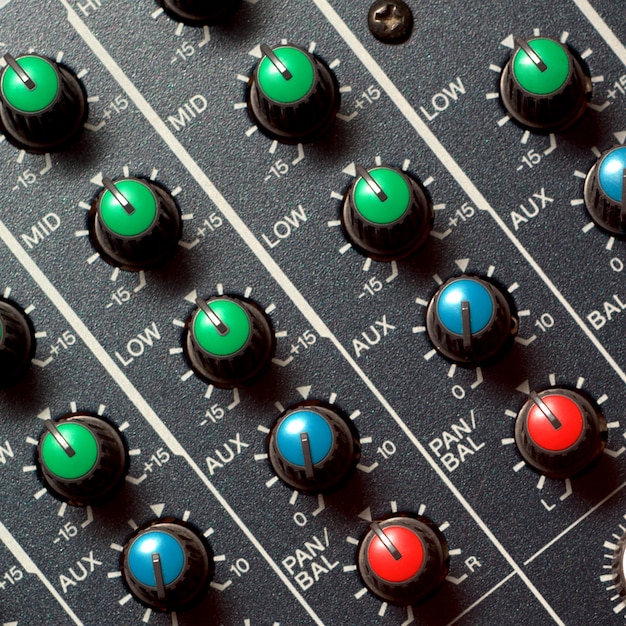Podcast Interview Mistakes: Avoid Common Pitfalls Now

Mastering podcast interviews requires vigilance against common missteps that can alienar listeners, including inadequate preparation, poor audio quality, and a lack of engaging conversational flow; addressing these core issues is crucial for sustained audience growth and successful show production.
In the dynamic world of podcasting, delivering engaging and insightful interviews is paramount to building and maintaining an audience. However, even experienced podcasters can fall prey to common missteps that diminish listener experience and ultimately, the show’s reach. Understanding and actively avoiding these Podcast Interview Mistakes: Avoid These 3 Common Pitfalls That Cost You Listeners can significantly elevate your content and ensure your hard work resonates with your audience.
The Peril of Insufficient Preparation: More Than Just a Quick Scan
Many podcasters underestimate the sheer importance of thorough preparation, often viewing it as a mere formality rather than a foundational element of a successful interview. This oversight is perhaps one of the most critical podcast interview mistakes, leading to disjointed conversations, missed opportunities, and ultimately, a disengaged audience.
Preparation extends far beyond simply knowing your guest’s name and general area of expertise. It involves a deep dive into their background, previous work, and any topics they are particularly passionate or knowledgeable about. When a host is genuinely prepared, it elevates the discussion from a superficial chat to a truly insightful exchange, demonstrating respect for both the guest and the listener.
Failing to Research Your Guest Thoroughly
One of the most glaring symptoms of insufficient preparation is a lack of in-depth guest research. This isn’t just about reading a bio; it’s about understanding their journey, their specific contributions, and any nuances that make their story unique. Without this foundational knowledge, interviews often remain at a surface level, failing to unlock the deeper insights that listeners crave.
- Research their past interviews to identify overused questions or topics to avoid.
- Explore their social media for recent activities, interests, or upcoming projects.
- Read their books, articles, or significant works to grasp their core philosophies.
- Identify potential areas of conflict or controversy that might be worth exploring respectfully.
When you’ve done your homework, you can formulate questions that are specific, thought-provoking, and demonstrate a genuine interest in your guest’s work. This not only makes the guest feel valued but also allows them to delve into subjects they might not typically discuss, offering fresh perspectives to your audience.
Not Crafting a Thoughtful Interview Outline
While an interview should feel natural and conversational, a well-structured outline acts as an invisible guide, ensuring that key points are covered and the conversation flows logically. Without it, discussions can veer off-topic, become repetitive, or simply run out of steam before reaching a meaningful conclusion.
A good outline isn’t a rigid script, but rather a flexible framework. It should include an introduction, key themes or questions, potential follow-up questions, and a planned conclusion. This structure helps both the host and the guest stay on track, providing a coherent narrative for the listener. It also allows for spontaneous diversions when interesting points arise, as the host can easily steer back to the main topics.
Concluding your preparation by ensuring your recording environment is ready – testing microphones, internet connection, and minimizing distractions – is also vital. Neglecting these technical checks can lead to audio issues, which, as we’ll discuss, are a major deterrent for listeners. A well-prepared host makes the interview feel effortless, a testament to the unseen effort behind the scenes.
Ultimately, comprehensive preparation is the bedrock of a compelling podcast interview. It equips the host with the knowledge and confidence to lead a meaningful discussion, setting the stage for an enriching experience for everyone involved, from the guest to the most loyal listener.
The Detrimental Impact of Poor Audio Quality: A Listener Killer
In the world of podcasting, where the primary medium is sound, sound quality is non-negotiable. Poor audio is arguably the most common and damaging of all podcast interview mistakes, directly leading to listener fatigue and attrition. Imagine settling in for an engaging conversation, only to be assaulted by muffled voices, distracting background noise, or inconsistent volume levels. The immediate response is to hit the skip button.
High-quality audio isn’t a luxury; it’s a fundamental requirement. Listeners expect clarity, balance, and a professional sound experience. Anything less communicates a lack of care or professionalism, undermining the value of even the most brilliant content.
Ignoring the Importance of Good Microphones and Recording Environment
The microphone is your primary tool, and investing in a decent one is paramount. While professional studios aren’t necessary, a high-quality USB microphone or an entry-level XLR setup can make a world of difference. Cheap built-in computer microphones are simply not designed for podcast-quality audio and will inevitably lead to thin, tinny, or distorted sound.
- Utilize external microphones for both host and guest whenever possible.
- Ensure guests are in a quiet, acoustically neutral environment (e.g., a closet or small room with soft furnishings).
- Avoid recording in highly reverberant spaces like kitchens or large, empty rooms.
- Use pop filters to reduce harsh plosive sounds.
Beyond the hardware, the recording environment plays a critical role. A quiet space free from echoes, external noise (like barking dogs or traffic), and internal distractions (phone notifications, rustling papers) is essential. Even minor background noises can become amplified and incredibly irritating when listened to on headphones.
Encourage your guests to be mindful of their surroundings. A quick pre-interview sound check can identify potential issues and allow for adjustments before recording begins. This proactive approach saves countless hours in post-production and ensures a smooth listening experience.
Neglecting Proper Audio Levels and Post-Production

Even with good equipment and a quiet environment, improper audio levels can ruin an otherwise perfect recording. If your guest’s voice is too quiet, listeners strain to hear; if it’s too loud, it becomes jarring. The goal is consistent, balanced volume throughout the entire interview.
Many recording software options offer automatic gain control, but manual checks are always best. Monitor levels during the recording to ensure they stay within an optimal range, typically peaking around -6 to -3 dB. Teach your guests how to speak consistently into their microphones, maintaining a steady distance.
Post-production is where the magic truly happens, transforming raw audio into a polished product. This includes:
- Noise reduction: Eliminating or minimizing hums, static, or background noise.
- EQ (Equalization): Adjusting frequencies to make voices clearer and more present.
- Compression: Evening out volume differences, making loud parts softer and soft parts louder.
- Mastering: Applying final touches to achieve a professional, broadcast-ready sound.
While some basic editing can be done by the host, investing in professional audio editing services or learning advanced techniques yourself can significantly elevate your podcast. Remember, listeners consume audio with their ears, and if the quality isn’t up to par, they’ll seek out shows that prioritize their listening comfort. Prioritizing audio excellence is a direct investment in your audience’s satisfaction and your show’s longevity.
Lack of Conversational Flow and Engaging Questions: Beyond the Script
The essence of a compelling podcast interview lies in its ability to feel like a natural, insightful conversation, not a rigid interrogation. One of the most damaging podcast interview mistakes is relying too heavily on a prepared script or asking only closed-ended questions, which can stifle genuine dialogue and lead to a flat, unengaging listening experience.
Listeners tune in for authentic interactions, unexpected insights, and the feeling of being a fly on the wall during a fascinating discussion. When the conversation feels forced, predictable, or lacks genuine curiosity, audience engagement plummets.
Asking Only Closed-Ended or Leading Questions
A common pitfall is asking questions that can be answered with a simple “yes” or “no,” or questions that subtly push the guest towards a particular answer. These types of questions shut down conversation rather than opening it up. They prevent the guest from elaborating, offering context, or providing the rich detail that makes an interview truly captivating.
Instead, focus on open-ended questions that invite expansion, reflection, and storytelling. Questions that start with “How,” “Why,” “What was your experience like,” “Tell me more about,” or “Can you elaborate” are far more effective at eliciting detailed and interesting responses. These questions encourage guests to share their perspectives, personal anecdotes, and deeper expertise.
Avoid leading questions that hint at the answer you expect. For example, instead of “Don’t you agree that X is the best approach?” try “What are your thoughts on X?” This subtle shift empowers the guest to express their true opinions, even if they differ from yours, leading to a more dynamic and honest exchange.
Failing to Listen Actively and Follow Up
Perhaps the most critical skill for a podcast interviewer is active listening. This means truly hearing what your guest is saying, not just waiting for your turn to speak or for the moment to interject your next pre-planned question. When you listen actively, you can identify opportunities for spontaneous follow-up questions that delve deeper into a point, clarify an assertion, or explore an unexpected tangent.
Lack of active listening leads to missed opportunities. A guest might mention a fascinating detail in passing, and a host who isn’t diligently listening will glide right past it, sticking to their script. This results in superficial conversations that fail to extract the guest’s true value and insights.
- Pay attention to subtle cues and unexpected phrasing.
- Ask “Can you give me an example of that?” to provide concrete illustrations.
- Use “That’s interesting, tell me more about…” to explore emerging themes.
- Don’t be afraid to go off-script if a particularly compelling point arises.
Effective follow-up questions are the hallmark of a skilled interviewer. They demonstrate genuine curiosity and make the conversation feel natural and organic. This conversational dance between host and guest creates a dynamic atmosphere that keeps listeners engaged and eager to hear where the discussion will lead next.
Domineering the Conversation or Interrupting Excessively
While the host’s role is to guide the conversation, it’s crucial not to overshadow the guest. Domineering the conversation, talking too much, or constantly interrupting not only alienates the guest but also frustrates listeners who tuned in to hear the expert. The host should be a facilitator, not the star of every segment.
Similarly, excessive interruptions break the flow of thought and can be incredibly jarring for listeners. While a well-timed interjection for clarification or to steer back to a point can be useful, frequent interruptions make the interview feel chaotic and disrespectful. Give your guests space to fully articulate their thoughts.
Cultivating a balance between guiding and allowing the conversation to unfold organically is key. It requires patience, humility, and a genuine desire to learn from your guest. When the host acts as a gracious and attentive conductor, the interview transforms into a harmonious symphony of ideas, captivating the audience from start to finish.
Overlooking the Listener Experience: Beyond the Content Itself
While content and audio quality are fundamental, many podcasters commit the mistake of focusing solely on these elements while overlooking the broader listener experience. This often leads to a show that, while perhaps informative, is not genuinely enjoyable or easy to consume. Forgetting the listener’s perspective is a pervasive podcast interview mistake that can covertly bleed your audience away.
A truly successful podcast isn’t just about what you say, but how it’s presented and how easily listeners can find and engage with it.
Unoptimized Show Notes and Episode Titles
Show notes are more than just a summary; they are a critical resource for your listeners and a powerful tool for discoverability. Many podcasters treat them as an afterthought, providing minimal information or, worse, none at all. Poorly optimized show notes miss a huge opportunity to provide value and improve SEO.

- Include a detailed episode summary that entices new listeners.
- List key topics or timestamps, allowing listeners to jump to specific segments.
- Provide relevant links to your guest’s work, social media, or discussed resources.
- Optimize with relevant keywords for better search engine visibility.
Similarly, episode titles should be clear, descriptive, and intriguing. Vague or generic titles don’t give potential listeners a reason to click. A well-crafted title, combined with compelling show notes, can significantly increase downloads and introduce your show to new audiences who are actively searching for content related to your topics.
Inconsistent Release Schedules or Excessive Length
Consistency is king in podcasting. Listeners thrive on routine, knowing when to expect new content. An inconsistent release schedule can lead to listener fatigue, as they might forget about your show or move on to more reliable sources. Whether it’s weekly, bi-weekly, or monthly, stick to it. Inform your audience of any changes well in advance.
Episode length is another crucial factor. While there’s no “perfect” duration, overly long episodes can lead to listener drop-off, especially if the content isn’t consistently engaging. Conversely, episodes that are too short might not provide enough depth to satisfy. Understand your audience’s habits and the nature of your content.
For interview-based shows, aim for a length that allows for thorough discussion without unnecessary filler. If an interview runs particularly long, consider splitting it into two parts. Respecting your audience’s time and attention span is a key aspect of delivering a positive listener experience.
Lack of Clear Call-to-Actions or Engagement Efforts
One of the most overlooked aspects of the listener experience is the lack of clear direction. What do you want your listeners to do after they’ve finished an episode? Without a clear call-to-action (CTA), they might simply forget about your show until the next episode appears, if at all.
Effective CTAs can vary but should always be straightforward:
- “Subscribe to our podcast on your favorite app!”
- “Leave us a rating and review on Apple Podcasts and Spotify.”
- “Visit our website at [your website] for more resources.”
- “Follow our guest, [Guest Name], on [social media handle].”
Beyond CTAs, actively engage with your audience. Respond to comments, ask for feedback, and create community spaces where listeners can interact with you and each other. Building a relationship with your audience fosters loyalty and transforms passive listeners into active advocates for your show. Ignoring these engagement opportunities is a significant missed opportunity, preventing your podcast from truly flourishing and building a dedicated community.
Navigating Difficult Guests and Unforeseen Technical Glitches
Even with meticulous preparation and the best equipment, interviews don’t always go as planned. Navigating difficult guests or unexpected technical glitches gracefully is a skill that separates seasoned podcasters from novices. Failing to handle these situations effectively can quickly turn a promising interview into an awkward and unproductive segment, becoming a subtle, yet impactful, podcast interview mistake.
Your ability to adapt and maintain composure sends a strong signal to your audience about your professionalism and resilience.
Handling Unresponsive or Rambling Guests
Interviewing an unresponsive guest—one who gives short, unelaborated answers—can feel like pulling teeth. It forces the host to constantly prod for more information, disrupting the natural flow. Conversely, a rambling guest might talk extensively but without focus, veering far off-topic and consuming valuable time without delivering substantive content.
For unresponsive guests, try:
- Rephrasing questions in different ways.
- Asking for personal anecdotes or specific examples to open them up.
- Using silence as a tool, allowing them space to think and elaborate.
- Asking “What else comes to mind when you think about X?”
For rambling guests, gentle redirection is key:
- “That’s a fascinating point, and it brings me to my next question about Y…”
- “Thank you for that detailed explanation. To ensure we cover everything, could we pivot to Z?”
- A subtle hand gesture if recording video, or a gentle interjection like “If I could just jump in here…”
It’s a delicate balance to manage, but the goal is always to guide the conversation to be valuable for the listener without being rude or dismissive to the guest.
Mitigating Tech Issues: From Static to Dropped Calls
Technical problems are the bane of every podcaster’s existence. Static, echoing, dropped internet connections, or a guest whose microphone suddenly stops working—these issues can derail an interview and frustrate everyone involved. While some problems are unavoidable, many can be mitigated with forethought.
- Always conduct a pre-interview tech check: test audio levels, internet connection, and video (if applicable).
- Have a backup plan: record locally on both ends if possible, use a secondary recording software, or have a phone line ready.
- Guide guests on optimizing their setup: advise using headphones, closing unnecessary apps, and finding a quiet space.
- Maintain patience and a calm demeanor if issues arise; frustration only makes the problem worse.
Transparently addressing minor tech glitches with your audience (e.g., “We’re experiencing a bit of static, bear with us!”) can also help set expectations. For major issues, consider pausing, troubleshooting, or rescheduling. A slightly delayed but high-quality interview is always preferable to a rushed, poorly produced one that reflects badly on your show.
Handling these challenges with grace and competence not only saves the interview but also reinforces your professionalism. Listeners appreciate a host who can smoothly navigate unforeseen difficulties, turning potential disasters into minor bumps in the road.
Building Rapport and Authenticity: The Human Connection
In an increasingly digital world, listeners crave genuine human connection. One of the subtle yet significant podcast interview mistakes is failing to build authentic rapport with your guest, which directly impacts the warmth and genuineness of the conversation. When a host and guest connect on a deeper level, the interview transcends a mere Q&A session and becomes a true dialogue.
This authenticity is palpable to listeners and fosters a sense of trust and intimacy that keeps them coming back.
Establishing a Personal Connection Pre-Interview
The interview doesn’t begin when the record button is pressed. It starts with the initial communication and continues through a brief pre-interview chat. Taking a few minutes before diving into the core questions to simply get to know your guest can make a world of difference.
- Engage in a brief, non-interview-related conversation before recording.
- Ask about their day, recent events, or something personal but light.
- Share a bit about yourself to create a two-way street of connection.
- Set a relaxed, friendly tone that puts the guest at ease.
This casual pre-chat helps break the ice, allows both parties to sync their energies, and establishes a comfortable atmosphere. When guests feel at ease, they are far more likely to open up, share personal insights, and engage in a more natural, flowing conversation.
Embracing Vulnerability and Shared Humanity
While interviews are often about expertise, allowing for moments of vulnerability and shared humanity can deeply resonate with listeners. This doesn’t mean turning the interview into a therapy session, but rather creating space for genuine emotions, challenges, and personal growth stories.
As a host, you can model this by sharing brief, relevant personal anecdotes (without making it about you) or by asking questions that invite reflection on struggles, failures, or learning curves. Many of the most impactful segments in podcasts come from unexpected moments of honest self-reflection from guests.
Listeners connect with authenticity. They want to hear from real people, with real experiences, not just polished experts. When an interviewer creates an environment where a guest feels safe to be truly open, the resulting conversation is far more compelling and memorable. It transcends the informational and taps into the emotional, strengthening the bond with your audience.
Ultimately, fostering genuine rapport and authenticity is not just a nice-to-have; it’s a strategic imperative. It elevates your podcast from a collection of facts to a vibrant platform for human connection, driving deeper engagement and loyalty from your audience.
Post-Interview Etiquette and Maximizing Reach
The interview doesn’t end when the recording stops. Many podcasters make the podcast interview mistake of neglecting crucial post-interview steps, which can impact guest relationships and the overall reach of the episode. The concluding phase is just as important as the preparation and recording, playing a significant role in leveraging your content effectively and fostering future opportunities.
Effective post-interview etiquette and strategic promotion can amplify your episode’s impact and solidify your reputation.
Thanking Your Guest and Following Up
A simple “thank you” goes a long way. After the recording, express genuine appreciation for your guest’s time and insights. Follow up with a personalized email, reiterating your gratitude and, if applicable, providing a timeline for the episode’s release.
- Send a prompt thank-you email after the interview.
- Include details about when the episode will air and where it can be found.
- Offer to share any relevant links or contact information for future collaborations.
- Consider a small token of appreciation, where appropriate and feasible.
Maintaining a positive relationship with your guests is crucial for several reasons: they might be willing to return for future episodes, recommend other potential guests, and, most importantly, they are likely to share their episode with their own networks. This organic promotion is invaluable for expanding your podcast’s reach.
Promoting the Episode Effectively (with Guest Involvement)
Once the episode is live, the work of promotion begins. However, this isn’t solely your responsibility. Your guest is a powerful ally in spreading the word. Many podcasters make the mistake of not making it easy for their guests to share the episode, or simply assuming they will.
- Provide your guest with ready-to-use promotional assets: episode link, embed code, social media graphics, and suggested captions.
- Tag them directly on social media posts.
- Highlight key quotes or insights from their interview that they might want to share.
- Encourage them to share within their networks, emphasizing the mutual benefit.
When guests actively promote their appearance, it exposes your podcast to an entirely new audience—their audience—who are already predisposed to trust their recommendations. This is one of the most effective and organic ways to grow your listenership base.
Beyond this, utilize all your own promotional channels: your website, social media, email newsletters, and cross-promotion with other podcasts. Consider short video clips, audio snippets, or quote cards to make your content more shareable across different platforms. The goal is to make it as easy as possible for both you and your guest to get the episode in front of as many eyes (and ears) as possible, ensuring that your valuable content finds its intended audience.
| Key Mistake | Brief Description |
|---|---|
| 📚 Lack of Preparation | Failing to research guests or craft an outline leads to disjointed conversations. |
| 🔇 Poor Audio Quality | Using bad microphones or ignoring post-production drives listeners away. |
| 🗣️ Stifled Conversation | Asking closed questions or not actively listening prevents genuine dialogue. |
| 🧭 Neglecting Listener Experience | Ignoring show notes, inconsistent schedules, or lack of CTAs hurts engagement. |
Frequently Asked Questions About Podcast Interviews
To make your interviews more engaging, focus on asking open-ended questions that encourage storytelling and deeper insights. Practice active listening to identify opportunities for spontaneous follow-up questions. Also, research your guest thoroughly to craft specific, thought-provoking inquiries, ensuring a dynamic and conversational flow that captures listener attention and keeps them invested.
Improving audio quality starts with investing in a good external microphone and recording in a quiet, acoustically treated environment. Ensure proper audio levels during recording and utilize post-production techniques like noise reduction, equalization, and compression to polish the sound. These steps will significantly enhance clarity and professionalize your podcast’s overall sound profile.
Guest preparation is extremely important for a successful podcast interview. Thorough research allows you to ask insightful questions, demonstrate respect for your guest, and uncover unique angles for discussion. A well-prepared host guides the conversation effectively, ensuring a coherent narrative that provides high value to listeners, preventing awkward silences and superficial exchanges.
It’s best to use a flexible interview outline rather than a rigid script. An outline ensures you cover key topics and maintain structure, but it leaves room for organic conversation and spontaneous follow-ups based on the guest’s responses. This balance allows for deep dives into interesting points while keeping the interview on track and engaging for listeners.
Show notes play a crucial role in attracting listeners by providing a comprehensive overview and resources for each episode. Detailed summaries, timestamps, and relevant links improve discoverability through search engines and offer additional value. Well-optimized show notes entice potential listeners and help current ones navigate content, significantly boosting engagement and episode reach.
Conclusion
Mastering the art of podcast interviews is an ongoing journey that requires continuous learning and adaptation. By understanding and actively avoiding common podcast interview mistakes—from inadequate preparation and dismal audio quality to a lack of engaging conversational flow—you can significantly elevate your show. Prioritizing thorough research, investing in quality sound, refining your interviewing techniques, and fostering genuine listener engagement are not just best practices; they are essential pillars for sustainable growth and a truly impactful podcast. Embrace these principles, and watch your audience grow, connecting with the compelling stories and insights you bring to life.





